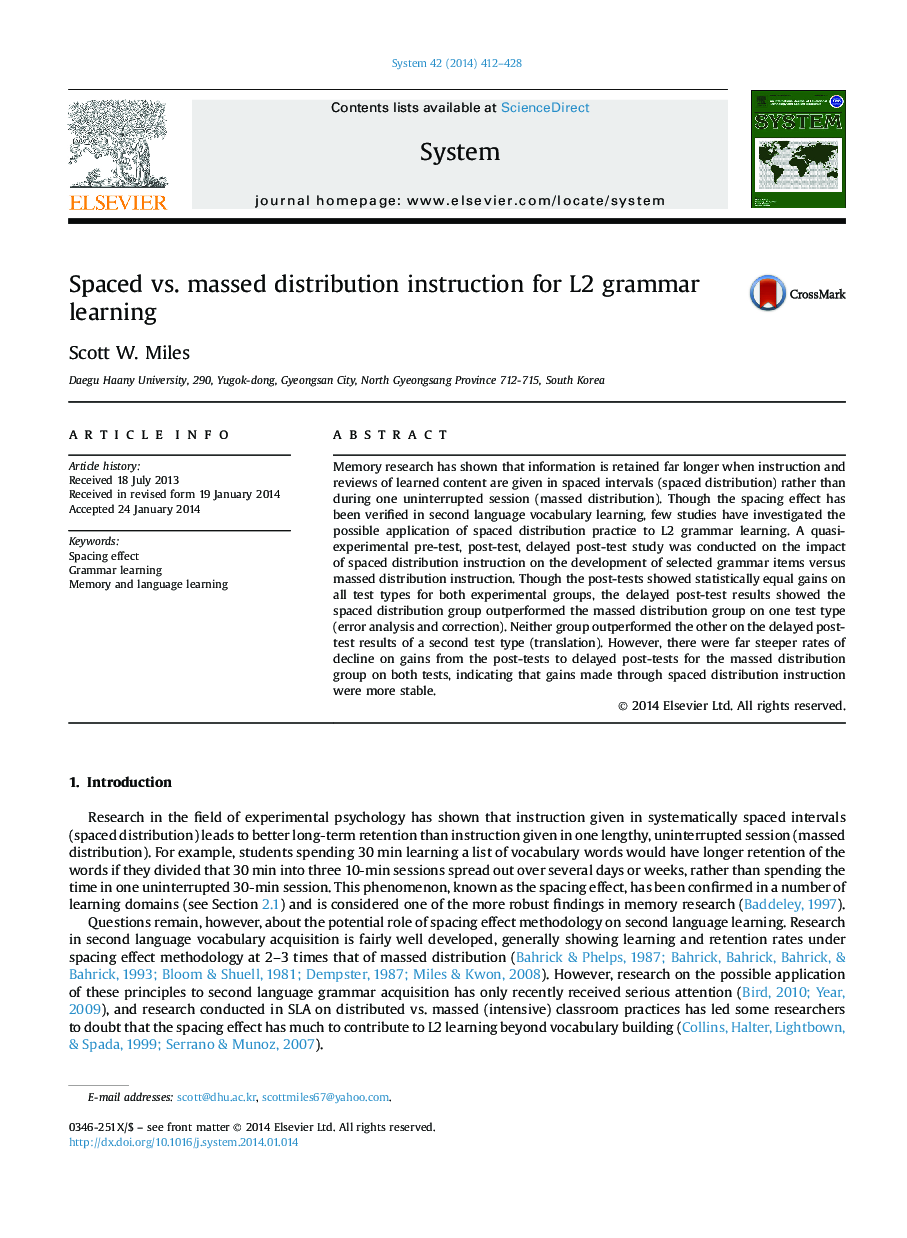| Article ID | Journal | Published Year | Pages | File Type |
|---|---|---|---|---|
| 373436 | System | 2014 | 17 Pages |
Memory research has shown that information is retained far longer when instruction and reviews of learned content are given in spaced intervals (spaced distribution) rather than during one uninterrupted session (massed distribution). Though the spacing effect has been verified in second language vocabulary learning, few studies have investigated the possible application of spaced distribution practice to L2 grammar learning. A quasi-experimental pre-test, post-test, delayed post-test study was conducted on the impact of spaced distribution instruction on the development of selected grammar items versus massed distribution instruction. Though the post-tests showed statistically equal gains on all test types for both experimental groups, the delayed post-test results showed the spaced distribution group outperformed the massed distribution group on one test type (error analysis and correction). Neither group outperformed the other on the delayed post-test results of a second test type (translation). However, there were far steeper rates of decline on gains from the post-tests to delayed post-tests for the massed distribution group on both tests, indicating that gains made through spaced distribution instruction were more stable.
